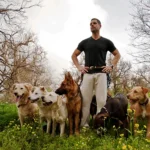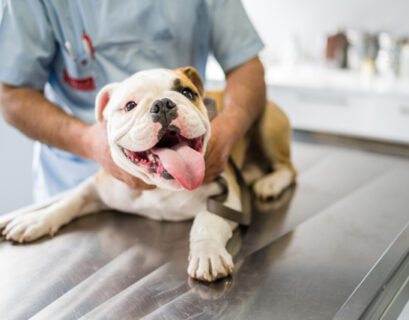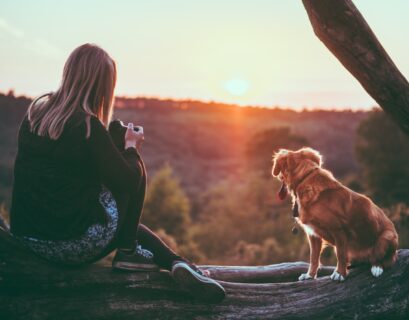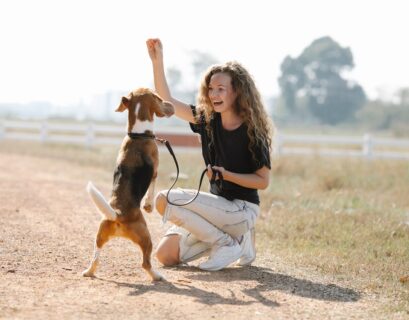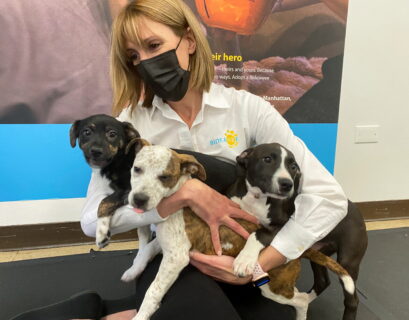Unleash the Magic: Pet Photography – Where Love and Whiskers Collide!”
Key Takeaways:
- Pet photography celebrates the bond between humans and their pets, capturing heartfelt moments.
- Patience and bonding are vital for successful pet photography and building trust with the animals.
- Choose the right camera and lens to achieve exceptional pet portraits.
- Utilize natural light for soft and flattering pet photographs.
- Composition techniques add visual interest and depth to images.
- Candid shots showcase the pet’s true personality, while posed shots require patience and positive reinforcement.
- Ethical considerations prioritize the safety and well-being of pets during photoshoots.
- Pet photography creates lasting memories that cherish the love shared with pets.
- Everyone can embark on a pet photography journey to capture their furry friend’s charm.
There’s a timeless saying that pets leave pawprints on our hearts, and as any pet owner can attest, these furry companions become an integral part of our lives, weaving their way into our happiest memories. The joy they bring is immeasurable, and it’s no wonder we want to preserve those precious moments forever. Enter the enchanting world of pet photography, where the camera becomes a vessel to freeze these heartwarming connections in time.
In recent years, the art of pet photography has taken the world by storm, and it’s not hard to see why. From mischievous kittens pouncing on yarn to loyal dogs gazing into our souls, each snapshot reveals our unique bond with our beloved pets. These images capture more than just a furry face; they encapsulate the unbreakable bond that transcends words, reminding us why our pets hold such a special place in our hearts.
Beyond smartphone snapshots, pet photography has evolved into a skilled art form, with dedicated photographers capturing the essence of these furry muses in breathtaking detail. It’s a delightful dance of patience, love, and skill, where photographers immerse themselves in the world of animals, building trust and forging connections to reveal the genuine and unfiltered moments that truly define our pets.
In this article, we’ll embark on a journey into the heart of pet photography, exploring the techniques beyond the click of a camera. We’ll learn how patience and bonding become the secret ingredients to capture the most heart-melting expressions. We’ll delve into the art of framing and composition, shedding light on their quirks and personalities.
The Art of Pet Photography
Pet photography is an extraordinary and heartwarming niche within the vast world of capturing moments through a lens. As any pet owner knows, photographing our furry friends can be immensely rewarding and uniquely challenging. In this section, we will delve into the artistry of pet photography, understanding the inherent difficulties involved and the priceless rewards that come with freezing those special moments shared with our beloved companions.
Understanding the Unique Challenges of Photographing Pets
Photographing pets requires deeply understanding of their behavior, instincts, and unique personalities. Unlike human subjects, who can follow instructions, pets operate on their own terms. This delightful unpredictability can make or break a shot, whether it’s a cat who decides to playfully dart away just as the shutter clicks or a dog with an unyielding urge to sniff the camera, capturing pets in their unscripted moments necessitates patience and adaptability.
Moreover, pets may feel uneasy or anxious in unfamiliar environments, causing them to be hesitant or skittish during a photoshoot. In these instances, the pet photographer must create a comfortable and safe space, allowing the animal to relax and showcase its true personality. This often involves bonding with the pet before the shoot, earning their trust, and making them feel at ease in the photographer’s presence.
The Role of a Pet Photographer: Skills and Techniques
A skilled pet photographer possesses unique talents beyond technical camera proficiency. Beyond mastering the fundamentals of exposure, composition, and lighting, a successful pet photographer is also a keen observer and an empathetic communicator.

1. Patience and Empathy: Patience is an invaluable virtue in pet photography. Understanding that pets may require time to acclimate to new surroundings or people. A compassionate appr can elicit the random behavior of our four-legged subject. Recognizing that each pet is an individual with its comfort zone allows the photographer to navigate the photo shoot.
2. Anticipating Moments: Pets are notorious for their fleeting and whimsical nature, making it essential for the photographer to be ever-vigilant and ready to capture those spontaneous moments. Anticipating a cat’s sudden pounce or a dog’s ear perking up in curiosity can lead to surprising and candid shots that speak volumes about the pet’s character.
3. Technical Skills: While mastering pet photography requires understanding animal behavior, it also requires technical expertise. A skilled photographer knows how to handle various camera settings quickly, especially in fast-paced situations. A fast autofocus system that understands how to freeze motion or capture fleeting expressions can make all the difference in securing that perfect shot.
4. Creativity and Adaptability: Pets come in all shapes, sizes, and energy levels, requiring the photographer to adapt their approach accordingly. Each age group brings charm and challenges, from energetic puppies and playful kittens to relaxed senior pets. A creative pet photographer can tailor their methods to suit the pet’s temperament while creating compelling images.
Patience and Bonding: Building Trust and Rapport with Your Pet
Patience and bonding lie at the heart of successful pet photography. Our furry companions are more than just adorable subjects; they are sentient beings with emotions and instincts. To capture their genuine personalities and create stunning pet portraits, photographers must invest time and effort in building trust and rapport with their animal models. In this section, we explore the significance of patience and the art of forming a strong bond with your pet, making the photo shoot a delightful experience for both the photographer and the four-legged muse.
Understanding the Value of Patience in Pet Photography
Photographing pets can be a joyous but unpredictable experience. Unlike humans, pets do not comprehend the concept of modeling or following instructions, making every session an adventure in spontaneity. One moment they might be playfully running around, and the next, they could be engrossed in a nap. In this ever-changing environment, patience is essential for any pet photographer.
Patience means recognizing that pets have rhythms and that the best shots often emerge when they are comfortable and at ease. A rushed or tense atmosphere can lead to stressed or uncooperative pets, resulting in lackluster photographs. By observing and understanding the pet’s behavior, the photographer can anticipate moments of interest and capture candid shots that reveal the pet’s true nature.
Building a Strong Bond with Your Pet
A key aspect of pet photography is creating a bond between the photographer and the pet. Like any relationship, this bond is built on trust, respect, and positive interactions. Before diving into a photoshoot, getting to know the pet is essential, allowing them to become familiar with the photographer’s presence and scent.
Gaining a pet’s trust may take time, particularly in an unfamiliar environment or with someone new. The photographer should approach the animal gently, using soothing tones and avoiding sudden movements that might startle or stress them. Sitting quietly nearby or offering a gentle scratch behind the ears can go a long way in establishing trust.
Using Treats and Positive Reinforcement During the Photo Session
Treats and positive reinforcement are invaluable tools in the pet photographer’s arsenal. Offering treats as rewards for good behavior can encourage the pet to remain engaged during the shoot and cooperate with various poses. However, it’s crucial to strike a balance and not overwhelm the pet with too many treats, which might lead to overexcitement or distract them from the task.
In addition to treats, verbal praise, and encouragement can reinforce positive behavior. Pets are attuned to the tone of our voices, and a cheerful “good boy” or “good girl” can make them feel at ease and appreciated.
It’s essential to be patient and understanding during the process. Some pets might be more camera-shy than others and require additional time to warm up to posing. A skilled photographer knows when to take breaks, allowing the pet to relax and recharge, ensuring a stress-free and enjoyable experience.
Choosing the Right Gear: Selecting the Ideal Camera and Lens for Pet Photography
Pet photography is an art that demands both technical expertise and creative flair. As we embark on the journey to capture our beloved furry friends in all their playful glory or serene moments of repose, the right gear becomes a crucial aspect of the process. This section will explore the key factors to consider when choosing the perfect camera and lens combination to create stunning pet portraits, whether our subjects are in action or at rest.
Selecting the Ideal Camera for Pet Photography
Regarding pet photography, the camera you choose can significantly affect your shots’ quality. While advanced smartphones can produce impressive results, investing in a dedicated camera offers greater flexibility and control over the image-making process.
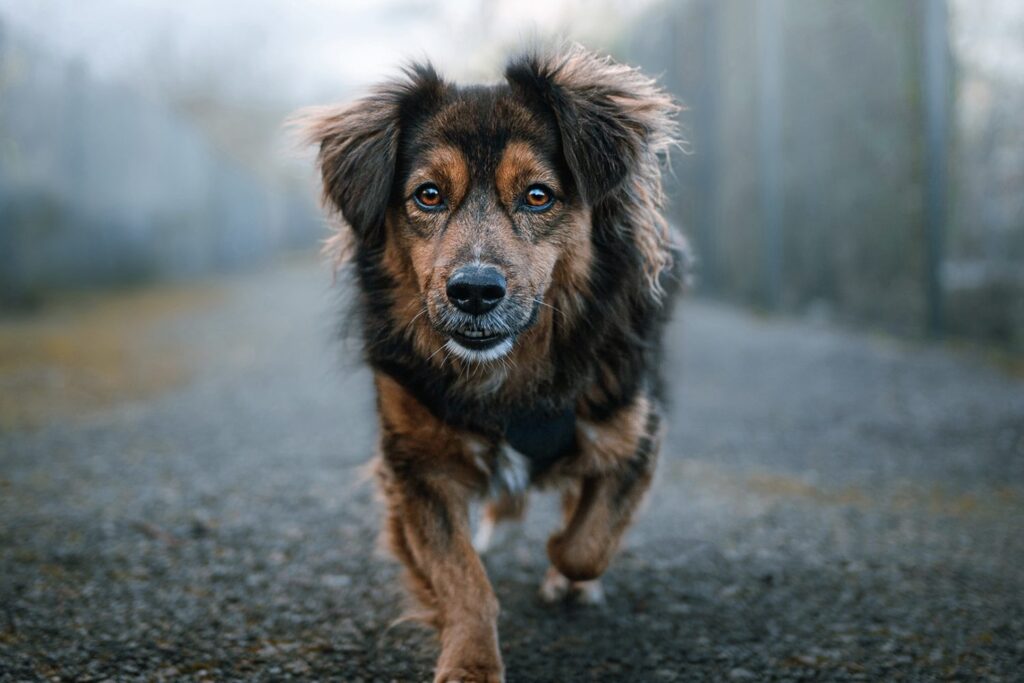
1. Autofocus System: Pets are active beings, and capturing them in motion requires a camera with a fast and reliable autofocus system. Look for cameras that offer advanced autofocus capabilities, such as phase detection or dual-pixel autofocus, to ensure your subjects remain sharp and clear, even during playful antics.
2. Burst Mode or Continuous Shooting: The ability to shoot in burst mode is indispensable in pet photography. Burst mode allows the camera to capture a rapid sequence of images, making it easier to freeze fast movements or spontaneous expressions. This feature is particularly useful when photographing or capturing energetic pets during playtime.
3. Full-frame vs. Crop Sensor: Both full-frame and crop sensor cameras have their merits in pet photography. Full-frame sensors typically provide better low-light performance and depth of field control, which is ideal for capturing portraits with creamy bokeh backgrounds. On the other hand, crop sensor cameras can offer more reach, making them advantageous for photographing skittish pets from a distance.
Considering the Right Lens for Pet Photography
Equally important to the camera body is the choice of the lens. Different lenses offer distinct perspectives and capabilities, making it essential to select one that complements your photographic style and the desired outcome.
1. Versatile Zoom Lens: A versatile zoom lens, 24-70mm or 24-105mm, is an excellent starting point for pet photography. These lenses provide a range of focal lengths, allowing you to capture wider environmental shots and close-up portraits without changing lenses frequently.
2. Prime Lens for Portraits: For capturing captivating pet portraits with beautifully blurred backgrounds, a prime lens with a wide aperture, such as a 50mm f/1.8 or 85mm f/1.4, is a fantastic choice. These lenses deliver stunning bokeh, isolating the pet from the background and drawing attention to their endearing expressions.
3. Telephoto Lens for Action Shots: A telephoto lens with a longer focal length can be a game-changer if photographing pets in action is your primary focus. Lenses in the 70-200mm or 100-400mm range allow you to maintain a safe distance from skittish pets while capturing them in motion with exquisite detail.
4. Macro Lens for Close-up Details: A macro lens is perfect for capturing the intricate details of your pet, such as their eyes, nose, or paws. It enables you to explore a new world of micro-expressions, revealing the often-overlooked beauty in even the tiniest features.
Setting the Scene: Locations and Lighting
Regarding pet photography, the choice of location and lighting can significantly influence the outcome of your shots. Whether you opt for the comfort of indoor settings or the freedom of the great outdoors, each offers distinct advantages and challenges. Moreover, harnessing the power of natural light can elevate your pet portraits to a new level of enchantment. Indoor vs. Outdoor Pet
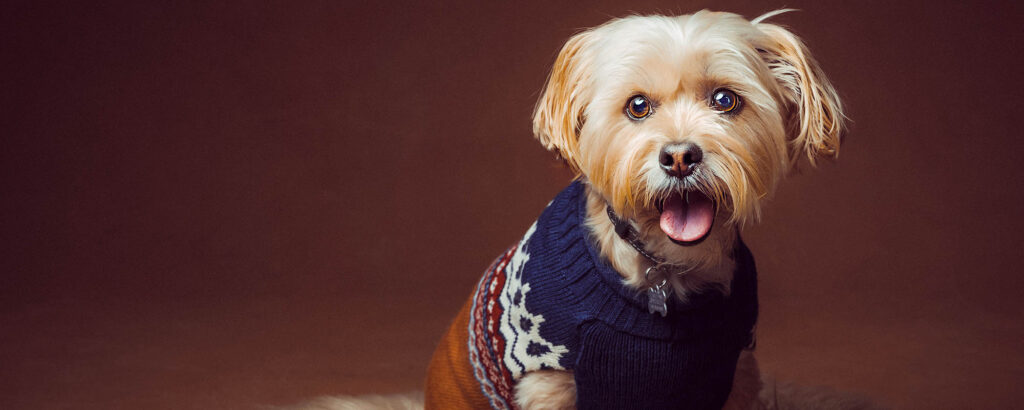
Photography: Pros and Cons
Indoor Pet Photography:
Pros:
Controlled environment: Indoor settings offer greater control over lighting, temperature, and distractions, providing a comfortable and familiar space for pets.
Suitable for shy pets: Indoor locations can be less overwhelming for pets not accustomed to outdoor environments or unfamiliar surroundings.
Unique backdrops: Utilizing elements within your home, such as cozy corners, textured walls, or plush furniture, can create charming and personalized pet portraits.
Cons:
Limited space: Depending on the size of the indoor area, there might be constraints on capturing pets in motion or accommodating larger breeds.
Artificial lighting challenges: Artificial lighting sources can create harsh shadows or color casts, requiring careful adjustments and techniques to achieve natural-looking results.
Outdoor Pet Photography:
Pros:
Natural and dynamic settings: The great outdoors offers a plethora of captivating backgrounds and environments, adding depth and diversity to your pet photographs.
Abundant natural light: Outdoor shoots during the golden hour or on overcast days provide soft, flattering light that enhances the pet’s features.
Opportunities for action shots: With more space to roam, outdoor locations allow pets to engage in playful activities, resulting in lively and energetic images.
Cons:
Unpredictable conditions: Weather changes and unexpected distractions can pose challenges during outdoor photoshoots, requiring adaptability and patience.
Skittish pets: Some pets may be nervous in open spaces or around other animals, necessitating extra care and time to ease them into the environment.
Utilizing Natural Light for Stunning Pet Portraits
Natural light is a photographer’s best friend. Its soft, diffused quality can add a touch of magic to your images, showcasing the pet’s features with a natural glow. When photographing indoors, position your pet near a window or glass door, allowing the soft daylight to illuminate their fur and eyes. Aim to schedule your session for outdoor shoots during the golden hour after sunrise or before sunset to benefit from the warm, golden light that bathes the scene in a captivating glow.
When working with natural light, it’s essential to be aware of the direction and intensity of the light source. Backlighting can create a beautiful halo effect around your pet, while side lighting can add depth and dimension to the image. Avoid harsh midday sunlight, which can create unflattering shadows and cause pets to squint.
Composition and Framing
Rule of Thirds and Other Composition Techniques
Composition is a powerful tool that can elevate pet photography from snapshots to artful masterpieces. The rule of thirds is a fundamental principle that involves dividing the frame into nine equal parts using two horizontal and two vertical lines. You create a balanced and visually engaging composition by placing the pet along these lines or at their intersections.
Beyond the rule of thirds, consider exploring other composition techniques, such as leading lines, symmetry, and framing. Leading lines can guide the viewer’s gaze toward the pet, while symmetry can create a sense of harmony and balance in the image. Framing the pet within natural elements, like foliage or an archway, adds depth and context to the photograph.
Incorporating the Pet’s Environment in the Shot
Including elements of the pet’s environment can add narrative and character to your photographs. Consider capturing the pet in their favorite spot for indoor shoots, whether it’s their cozy bed, near their toys, or by a sunlit window. These elements provide insight into the pet’s personality and daily life.
In outdoor photography, pay attention to the surroundings and use them to your advantage. For example, photographing a dog exploring a forest trail or a cat perched on a garden wall creates a story beyond just the pet’s portrait. Environmental elements can also serve as leading lines, framing the pet and highlighting its charming features.
Candid vs. Posed Shots
Capturing Spontaneous Moments that Showcase the Pet’s Personality
Candid shots reveal the true essence of your pet’s personality. While posed shots have their place, candid photographs capture genuine emotions and fleeting expressions that might not occur during structured sessions. Patience is key in candid pet photography; allow the pet to explore, play, and relax, and be ready to seize those precious moments that unfold naturally.
Tips for Getting Your Pet to Pose for the Camera
While candid shots hold a special charm, there are instances when posed shots can be equally captivating. Remember to use positive reinforcement and patience to get your pet to pose for the camera. Start with simple commands, such as “sit” or “stay,” and reward them with treats or verbal praise when they follow instructions. Incorporate toys or favorite treats to keep their attention focused on the camera. Be mindful of their comfort and mood, and never force them into uncomfortable positions.
Editing and Enhancing Pet Photos: The Importance of Post-Processing in Pet Photography
Pet photography doesn’t end when the photoshoot ends; it begins the journey to creating captivating and emotive pet portraits. Post-processing, also known as editing, is vital to elevating your pet photos from good to exceptional. In this section, we delve into the significance of post-processing, focusing on preserving the natural look of your pet while enhancing the image to bring out its full potential.
The Importance of Post-Processing in Pet Photography
Post-processing is a powerful tool that allows photographers to refine and polish their images. It can transform a good photo into an extraordinary work of art, highlighting the pet’s features, expressions, and the emotions they evoke. While the goal is to preserve the authenticity of the pet’s appearance, post-processing allows for adjustments that enhance the overall quality of the photograph.
Common editing techniques in pet photography include:
Color Correction: Adjusting the color balance ensures the pet’s fur and surroundings appear natural and true to life. Balancing whites and correcting color casts can be particularly important in indoor settings with artificial lighting.
Exposure and Contrast: Fine-tuning the exposure and contrast can add depth and dimension to the photograph, making the subject pop while retaining the details in both highlights and shadows.
Sharpening: Applying selective sharpening to the pet’s eyes and fur can draw attention to their features and create a striking focal point.
Cropping: Cropping can help eliminate distractions in the background or fine-tune the composition to adhere to the rule of thirds or other principles.
Preserving the Natural Look of Your Pet While Enhancing the Image
The essence of pet photography lies in capturing our furry friends’ genuine personalities and charm. While editing can be a valuable tool for enhancement, it’s essential to balance improvements and preserve the pet’s natural appearance.
Avoid excessive retouching or manipulation that alters the pet’s physical features. For example, avoiding smoothing their fur excessively or changing their eye color can lead to an unnatural and artificial appearance.
When applying editing adjustments, always refer back to the original photo to ensure that the changes complement the pet’s inherent beauty rather than detract from it. A natural look will evoke a more emotional response from viewers and serve as a timeless tribute to your beloved companion.
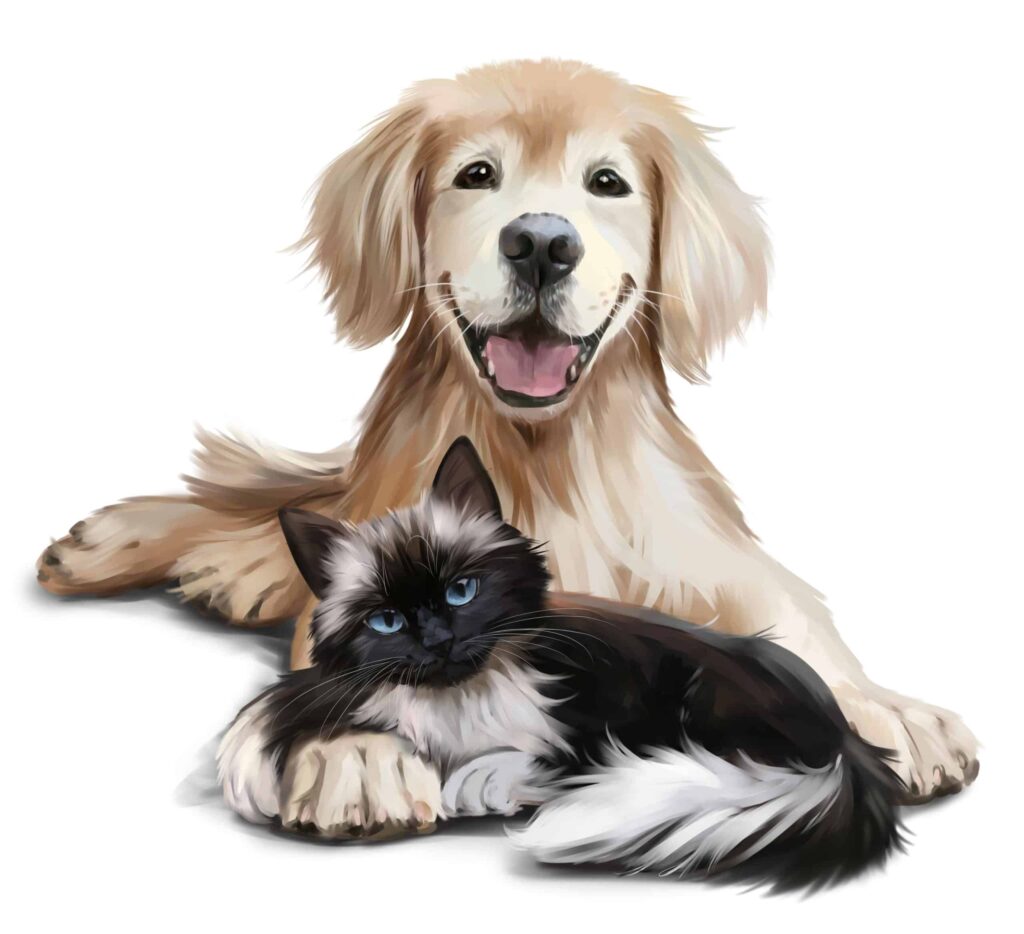
Avoiding Common Pitfalls
Red-eye and Other Common Pet Photo Issues
Red-eye, a common issue in pet photography, occurs when the flash reflects off the back of the pet’s eyes. To prevent red-eye, consider avoiding using direct flash when photographing pets indoors. Instead, rely on natural or diffused lighting to minimize the chances of this phenomenon.
In addition to red-eye, other common issues include lens flare, distracting backgrounds, and unwanted reflections. These can be addressed during post-processing by using tools such as spot removal or cloning to clean up distractions and enhance the focus on the pet.
Tips for Dealing with Pet Movement and Blur
Pets are energetic and constantly on the move, which can lead to motion blur in photographs. To counteract this, use a fast shutter speed to freeze their movements or engage burst mode to quickly capture a series of images. If blur still occurs, embrace it in the right context; it can convey a sense of playfulness and action in the image.
To achieve sharpness when there is a camera shake, use a tripod or stabilize the camera against a solid surface. Additionally, image stabilization techniques during post-processing can help minimize the effects of minor camera shake.
Adding a Personal Touch
Including Pet Owners in the Photoshoot
Pet photography is not only about capturing the essence of the animal but also about celebrating the bond between pet and owner. Including pet owners in the photoshoot adds an emotional element to the images and creates lasting memories of their companionship.
Incorporate candid shots of pet owners interacting with their furry friends, such as playing fetch, cuddling, or walking together. These moments of connection capture the love and joy shared between them, resulting in heartwarming and authentic photographs.
Creative Ways to Display and Share Your Pet Photos
Pet photographs are meant to be treasured and shared with loved ones. From cherished photo albums to eye-catching wall art, there are countless creative ways to showcase your pet’s portraits.
Canvas Prints: Printing pet portraits on canvas adds a touch of elegance and artistic flair to your images, making them stand out as focal points in your home decor.
Photo Books: Creating personalized photo books allows you to tell the story of your pet’s life and adventures through a beautifully designed and professionally printed keepsake.
Social Media and Online Galleries: Share your pet’s photos with friends and family on social media platforms or create online galleries to showcase your work as a pet photographer.
Greeting Cards and Calendars: Turn your pet’s portraits into greeting cards or personalized calendars to send heartwarming messages to loved ones throughout the year.
Challenges and Joys of Pet Photography: Dealing with Uncooperative or Shy Pets and Capturing Unforgettable Moments
Pet photography, like any art form, comes with its own set of challenges and rewards. From uncooperative or shy pets to heartwarming success stories, each session is an adventure in patience, empathy, and joy.
Dealing with Uncooperative or Shy Pets
Photographing pets can be an unpredictable journey filled with moments of spontaneity and unpredictability. Some pets are naturally camera-shy or may need help understanding the photoshoot concept, making them uncooperative during sessions. Whether it’s a dog who refuses to sit still, a cat who prefers to stay hidden, or a bird that takes flight at the sight of the camera, pet photographers must be prepared to navigate these challenges with grace and understanding.
Patience and Empathy: Patience is a virtue that shines brightly in pet photography. Understanding that each pet has a unique personality and comfort zone is essential. Photographers must take the time to build a bond with the animal, offering gentle encouragement and reassurance. Allowing the pet to set the pace and respecting their boundaries can lead to genuine trust and cooperation.
Adapting to the Pet’s Personality: Every pet is different, and successful pet photographers know how to adapt their approach to suit the pet’s temperament. Some pets thrive on interaction and play, while others prefer a calm and soothing environment. Being flexible and attuned to the pet’s needs lets the photographer capture their true essence and personality.
Heartwarming Success Stories and the Joy of Capturing Unforgettable Moments
Despite the challenges, pet photography is a deeply rewarding endeavor that offers moments of pure joy and heartwarming success stories. There’s nothing quite like capturing the unguarded expressions of a dog wagging its tail with glee, a cat purring contentedly in its owner’s arms, or a bird showing off its vibrant plumage. Frozen in time, these fleeting moments become cherished memories that celebrate the unique bond between humans and their beloved pets.
Creating Lasting Memories: Pet photographers have the privilege of creating lasting memories for pet owners, capturing the love, joy, and quirks that make their furry companions so special. These photographs become treasured keepsakes that evoke emotions and transport owners back to those precious moments shared with their pets.
Celebrating Uniqueness: Each pet has a story to tell, and through photography, their individuality and spirit shine through. Whether it’s a naughty kitten, a loyal and obedient dog, or an exotic bird with a playful personality, pet photographers have the honor of celebrating the diverse and captivating nature of our animal friends.
Photographing Different Pets: Tips for Dogs, Cats, Birds, and Other Pets
Understanding the nuances of each animal’s behavior is crucial for successful pet photography. While each pet is an individual, certain tips can help photographers capture their subjects’ best angles and expressions:
Tips for Photographing Dogs:
Utilize treats and positive reinforcement to encourage cooperation and reward good behavior.
Engage in play and allow the dog to run and be themselves for candid action shots.
Capture their expressive eyes and joyful expressions during play or when focused on their owners.
Tips for Photographing Cats:
Create a calm and comfortable environment to ease their potential nervousness.
Use toys or favorite objects to engage their curiosity and capture playful moments.
Be patient and ready to seize candid shots during grooming or relaxed moments.
Tips for Photographing Birds:
Photograph birds in natural settings or an aviary to capture them in their element.
Use a fast shutter speed to freeze their swift movements and vibrant plumage.
Pay attention to their body language, and be ready to capture those brief moments when they strike a pose.
Ethical Considerations: Ensuring the Safety and Well-being of Pets During Photoshoots
Respecting the Pet’s Boundaries and Comfort Level: The safety and well-being of the pets should always be a top priority during photoshoots. Photographers must respect the pet’s comfort level and avoid placing them in stressful or uncomfortable situations. Forcing pets into poses or overstimulating them can lead to distress, resulting in uncooperative or anxious behavior.
Creating a Safe Environment: Pet photographers should take precautions to create a safe environment for the animals. Removing potential hazards, securing pets with leashes or harnesses when necessary, and providing breaks and rest periods ensure their safety and prevent accidents.
Working with Pet Owners: Collaboration with pet owners is key to understanding the pet’s preferences, quirks, and limitations. Pet owners can provide valuable insights into their pets’ behaviors and help the photographer establish a comfortable and cooperative atmosphere.
Conclusion
In photography, few genres hold the same heartwarming and captivating allure as pet photography. Throughout this exploration of the art, we have journeyed into the heart of the matter, understanding the significance of capturing special moments with our beloved furry companions. From the technical aspects of gear selection and the nuances of composition to the profound joys and challenges of working with pets, pet photography is a delightful and rewarding pursuit that celebrates the remarkable bond between humans and their animal friends.
At the core of pet photography lies its timeless value – the ability to preserve precious memories for a lifetime. Our pets touch our lives profoundly, filling our days with love, joy, and unforgettable moments. Pet photography immortalizes these experiences, capturing the essence of our pets’ personalities, playful antics, and tender moments shared with their human families. These photographs become cherished keepsakes that transcend time, invoking laughter, nostalgia, and even tears of love long after our beloved companions have crossed the rainbow bridge.
As each year passes, these pet portraits become more than just images; they become a window to the past, a gateway to reliving the joy and connection shared with our furry friends. They testify to the love and companionship that shape our lives, reminding us of animals’ profound impact on our hearts and souls.
To every pet owner, we extend an invitation to embark on their pet photography journey. Armed with the right understanding, gear, and techniques, anyone can capture beautiful and heartfelt images of their furry friends. Pet photography isn’t reserved for professionals alone; it’s a personal and intimate art form that can be pursued by anyone with a camera and a love for their pets.
Throughout this article, we’ve explored the artistry and joy that lies within the realm of pet photography. From patient bonding and the art of capturing candid moments to the ethical considerations that ensure our pets’ well-being, we’ve unraveled the tapestry of this captivating art form. The essence of pet photography is about obtaining stunning images and the journey of connection and love shared between the pet and the person behind the camera.



